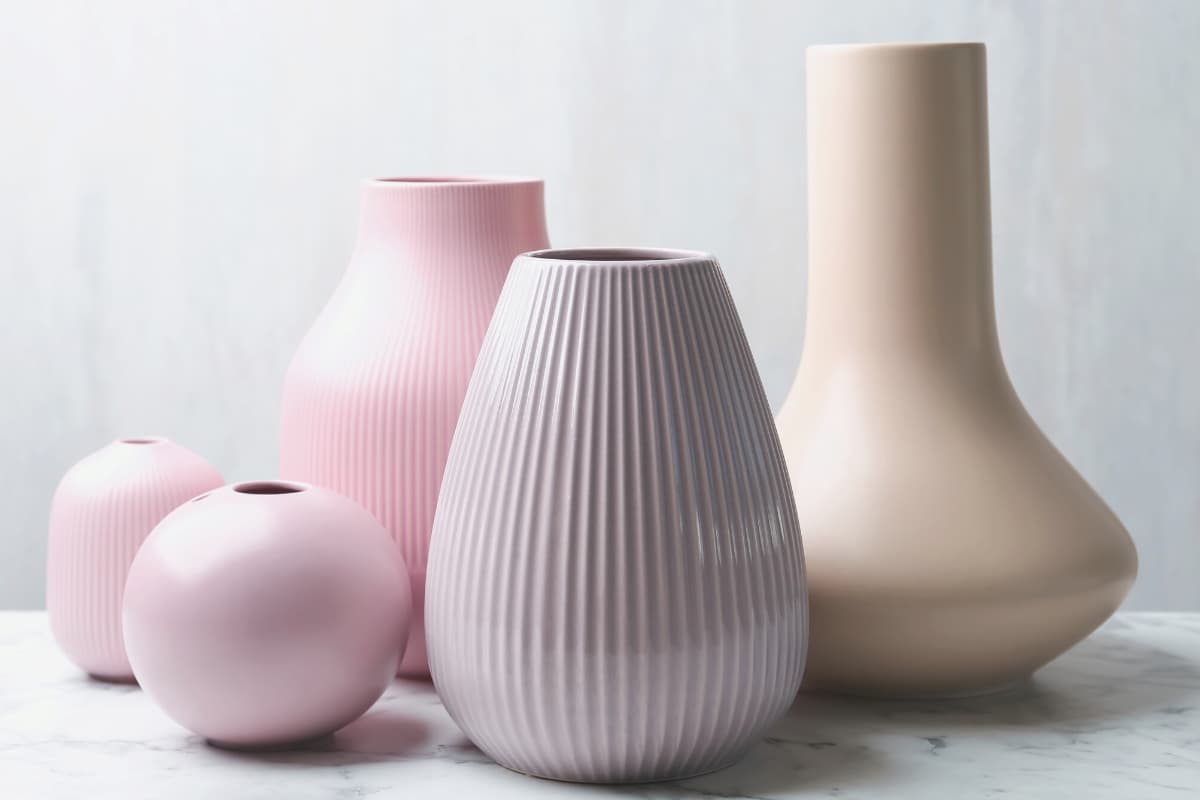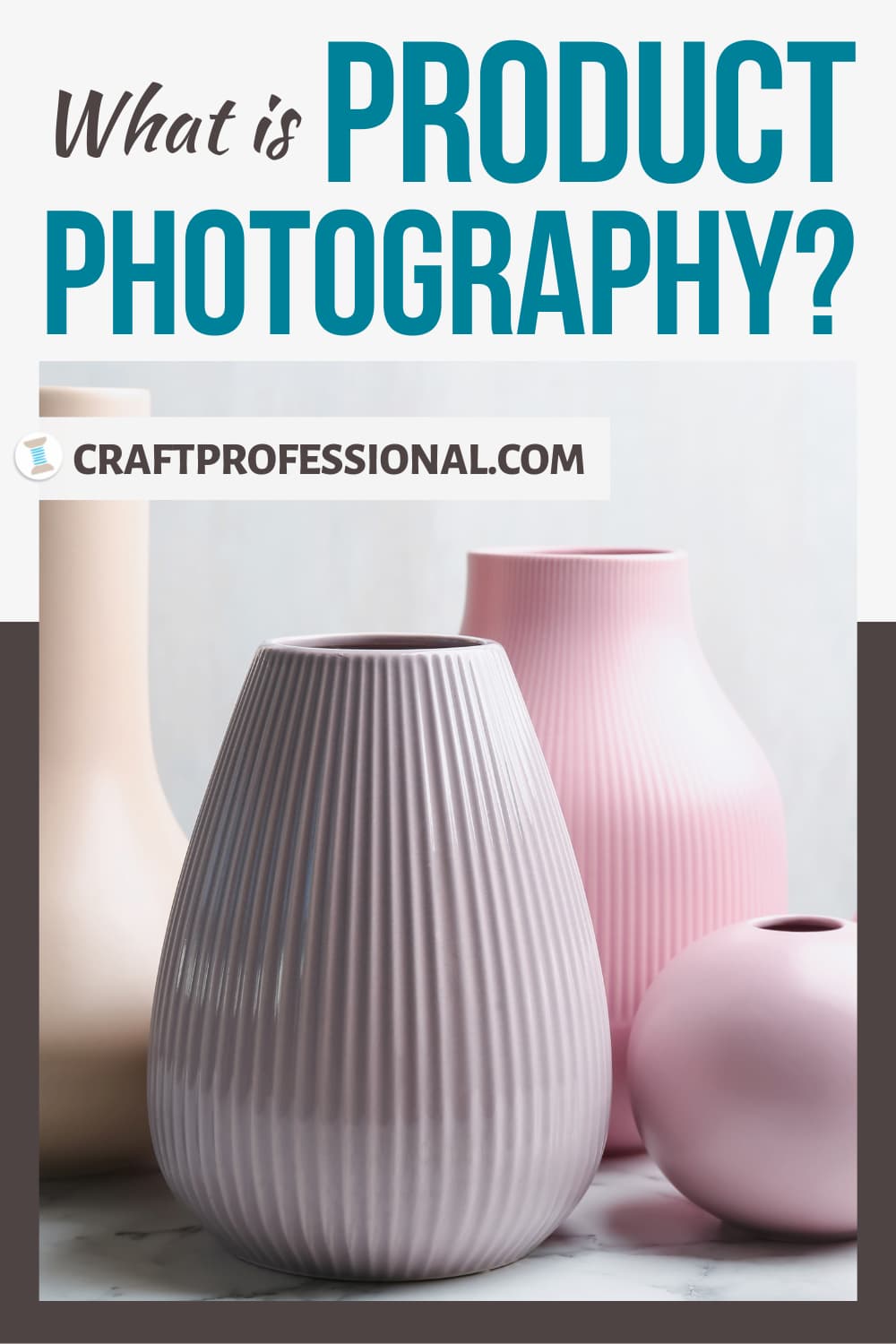- Home
- Craft Photography
- What is Product Photography?
What is Product Photography?
What is product photography, how does it affect sales, and how do you get great images of your products?
Product photography, sometimes called commercial photography, is an essential part of your company's marketing strategy. Great photos of products help increase sales by providing customers with important information and creating a desire to buy.
What is Product Photography?
There are two common types of product photography: Product-only images, and lifestyle photos. Often, you'll see both types of photos used to promote a product.
Product-only images feature your product alone on a plain background. Frequently a white backdrop is used to create a clean look that doesn't distract from the product. Other colors are sometimes used for different effects. This type of photo is an excellent choice for showing details of your product.
Lifestyle product photography shows your item styled with props or models. This type of photo can convey important information such as the size of the product and ways to use the product. It can also be very effective in building potential customers' desire to purchase.

Why is Good Photography Important?
Good product photography can increase sales, while bad product images can destroy sales. In fact, a mediocre product with great product photos can out-sell a fabulous product that is being promoted with bad photos.
How do images affect sales?
If you sell your products online, product photographs provide key details that influence customers' decision to buy.
You can (and should) provide clear, detailed written descriptions of your products. But photos provide information that can't be easily conveyed in words.
White background photos can show all angles of a product. Close-ups can reveal details about the quality of the product or special features.
Lifestyle images can help customers understand the size of the product. They can also create a mood that speaks to your target customer and builds their desire to buy.
Check out my Pinterest board of Product Photography Ideas and Inspiration to see some great photos that achieve those goals.
If you sell at vendor events, like craft shows, your photos are the only thing event organizers have to assess the quality of your products. If these events are juried, meaning only a few applicants are selected for the show, great photos will help you get into more and better shows.
Ultimately, if you sell a physical product, you must invest in great product photography.
Is Product Photography Easy?
It depends.
An amateur photographer can do an excellent job with some types of product photography. Other situations are more complex, and you would be wise to consider hiring a pro.
Easier Product Photography
Items that are not reflective:
Items that are not reflective are easier to light, and good lighting is absolutely essential to good product photography. If you sell a product that is not reflective or shiny, you may be able to DIY your product photos fairly easily.
Simple setups:
Tabletop photography using simple styling props can be fairly straightforward to set up.
Light box photography is also quite easy to learn. If your product is small enough that you can use a simple tabletop or light box set up, it will be easier to achieve great product photos.
Photos for your Etsy shop, Shopify store, blog or social media:
The way you plan to use your photos can impact the quality and type of images you need. If you're taking product photos to use in your online store, blog or for social media posts, you make be able to take your own product photos.
More Difficult Product Photography
Shiny, reflective, translucent/transparent items:
Products that are shiny, reflective, and/or transparent (glass, for example) are trickier to light well. You can certainly learn how to light product photography well, but if your products fall into this category, learning to take great product photos will take more work.
Larger items, locations, models:
If your products are too large for simple tabletop photography, your setup will be a bit more complex. Similarly, if you would like to take photos in specific locations or work with models, you'll be adding extra layers of complexity and elements to manage, which will make your work more difficult.
Competitive shows & events:
Some situations call for the type of very high quality photos that are tough to achieve as an amateur photographer. If you're using product photos to apply to competitive juried shows, or in any other situation that calls for exceptional images, please seriously consider hiring a professional photographer. They will bring a level of skill and knowledge to the project needed to get images that will make your applications competitive.
What Do I Need for Product Photography?
When you start researching photography equipment, you'll be struck by variety of equipment available. Some of it is quite expensive, and figuring out what you need can be confusing.
Luckily, you don't need to invest in a lot of expensive equipment to create a simple product photography setup, but you do need a few basics to get good results.
Camera
DSLR camera — A DSLR camera has the built-in functionality needed to take great photos under a variety of conditions, so you can consistently create exactly the look you want.
Two popular brands:
Lenses — The best lens for product photography will depend on the type of product you're photographing. The lens that comes with your camera (called a kit lens) might be all you need to get started.
Lighting
Natural light — If you're photographing items that are simple to light, you may be able to use natural lighting, setting up outside or near a window.
Artificial light — If you need or want more control of your light sources, invest in some artificial lighting
Light box kit — A light box kit is a great lighting option for beginner photographers because it is easy to use. It includes artificial lights and a white box. You can place your product inside the white box to create a controlled environment for taking product photos.
Reflectors — Reflectors are used to change the direction of light. White poster board works well as an inexpensive reflector.
Diffusers — Diffusers spread out the light to soften shadows. You can buy commercial photography diffusers, or any plain white material that light can flow through (curtain, sheet, t-shirt) can be used as a diffuser.
Stability & Consistency
Tripod — You may not need a tripod to get started with product photography, but it is very nice to have one.
A tripod keeps the camera steady and in place, allowing you to take photos that are sharp and consistent. It also frees up your hands, making the process much easier to manage.
Remote shutter release — A remote shutter release allows you to take a photo without touching the body of your camera. It helps you avoid any camera shake so you get sharp images. It's not essential, but it's nice to have and not terribly expensive.
Photo Styling
Backdrops — Backdrops from the background of your photo. White poster board is a great backdrop to start with. If you want a different look, there are plenty of great ways to experiment with product photography backgrounds.
Styling props — Any items that help show your product at its best, build desire to buy, or add information about your product (such as size or ways to use it) are good candidates to be used as styling props
Styling tools — Tools such as clear acrylic blocks to help arrange items at different angles, clamps or tape to hold things in place, and gloves and lint-free cloths to keep items perfectly clean will help you take great product photos.
Photo Editing
Image editing software or apps — Learn how to edit product photos by using a simple image editing tool to see if it meets your needs. Don't worry about more advanced tools when you're getting started. More advanced software has great functionality, but for a beginner, it can add unnecessary complication.
Want more information about product photography gear? Here's where you can learn more about the equipment needed for product photography.
How Can I Practice Product Photography?
This craft product photography guide breaks the process into 15 simple steps. You'll learn what you need to know and won't have to worry about being confused by extra complicated information you don't need as a beginner.
At the end of the guide, you'll find links to some excellent books and courses help you take your skills to the next level when you're ready.



New! Comments
Have your say about what you just read! Leave me a comment in the box below.